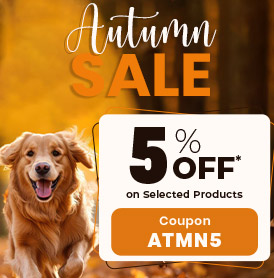Not many are aware of the food they’re giving their dog. When there are so many choices, it’s easy to just grab the first cheap bag you see on the shelf and call it a day. However, as a responsible pet parent, you must do research and prepare nutritious, healthy meals for your furry family member.

This is why we consider it is important the people should know which human foods are good for dogs and which aren’t. This is especially useful during an emergency. We’ll look at the truth about some commercially prepared dog food, what you should know about feeding your dog “human” food, and a great alternative for pet parents who want to give their dog a human-grade diet.
A few human foods that are safe for both dogs and cats to consume, and include:
- Salmon
- Bread
- Eggs
- Spinach
- Chicken
- Turkey
- Green beans
- Broccoli
- Yogurt
- Peanut butter
- Cottage cheese
- Carrots
- Cantaloupe
- Oatmeal
- Peas
- Bananas
- Cheese
- Pumpkin
- Blueberries
- Apples
There are foods that you should never give your cat or dog such as:
- Chocolate
- Coffee
- Soft drinks
- Avocados
- Foods containing Xylitol
- Chewing gum
- Macadamia nuts
- Grapes and raisins
- Onions
- Garlic
- Yeast dough
Bacon and other high-sodium foods should be avoided. Here are a few tips to help you transition from commercial pet food to giving your pet a healthy diet made up of ingredients you already have in your refrigerator or pantry. If you prepare your pet’s food at home, see your veterinarian ensure that it is getting all of its nutritional needs addressed.
You Feed Human Food to Your Dog Everyday
Yes. You heard it right. You should give your dog well-balanced, nutritious human food if you want him to be healthy. If you just feed commercial food to your pet, he may become ill and develop serious health problems.
The vast majority of human foods are safe for dogs to eat. Boneless, cooked meat, fish, and eggs are the bread and butter of a good canine diet. Don’t be afraid to include any of the fruits and vegetables listed above in your dog’s diet, and it’ll be the healthiest dog in no time.
If you want to move to an all-homemade diet, put a little less kibble and a little more cooked or raw food in your dog’s bowl each day for a week. Then you can eliminate kibble if you want to.
Use veggies, too
Although meat is the most important component of a balanced dog’s diet, vegetables and a modest bit of fruit are also useful. Dogs, like humans, consume a wide range of foods. They do appreciate a broad variety of foods.
Get the right balance
Before moving to completely homemade food, consult your veterinarian, then look for ideas online or on social media from your favorite raw balanced feeders.
Puppies, the elderly, and dogs with specific medical problems all have different nutritional needs. If you’re cooking for a puppy or a dog that isn’t yet an adult, consult a veterinarian or a veterinary nutritionist beforehand.
Watch the fat
Even though it’s a crucial part of a dog’s diet, too much fat might cause stomach upset or even pancreatitis. Hence, fatty meats, skins, butter, and other high-fat meals should be avoided.
Beware of bones
Cooked bones might cause choking or intestinal tearing. Although some proponents of natural pet food advocate consuming raw bones. Marrow bones, on the other hand, are considered safe as long as they’re at least two inches long to minimize splintering and don’t get stuck in your dog’s muzzle.
Don’t give your dog anything you wouldn’t eat yourself
When veterinarians say don’t feed table scraps, they mean don’t feed what’s left on the plate after you’ve eaten everything that would otherwise go down the garbage disposal if you didn’t have a dog. Fat, gristle, and skin aren’t good for your dog any more than they are for you.
Do your research
One of the most enjoyable things you’ll ever do is change the way you feed your dog but do your research first. There are a plethora of fantastic publications and resources to choose from. Before making any dietary changes, make sure you know what foods are dangerous to dogs and always seek guidance from a veterinarian.
If you want to add human foods to your dog’s diet, start with fresh, non-processed, no-carbohydrate foods like green leafy vegetables and raw meat. Scrambled eggs are also excellent, but keep the carbs to a minimum. Leftover bread and pizza are not permitted!
Now that you’ve solved the important concern of feeding your dog, you’ve set aside some time to stock up on extra dog food. It’ll be time to reintroduce your dog to their regular diet after that. But don’t go too fast. Sudden dietary changes can upset a dog’s tummy.
Return your dog to its regular diet gradually. Over several days, alternate increasing portions of their usual dog food with the “in a pinch” dish until your dog is solely eating their usual food. Because life is hectic, it’s inevitable to run out of dog food from time to time. Your dog will surely appreciate a human meal or two. Remember to eat nutritious “in a pinch” meals and get some normal dog food as soon as possible.

